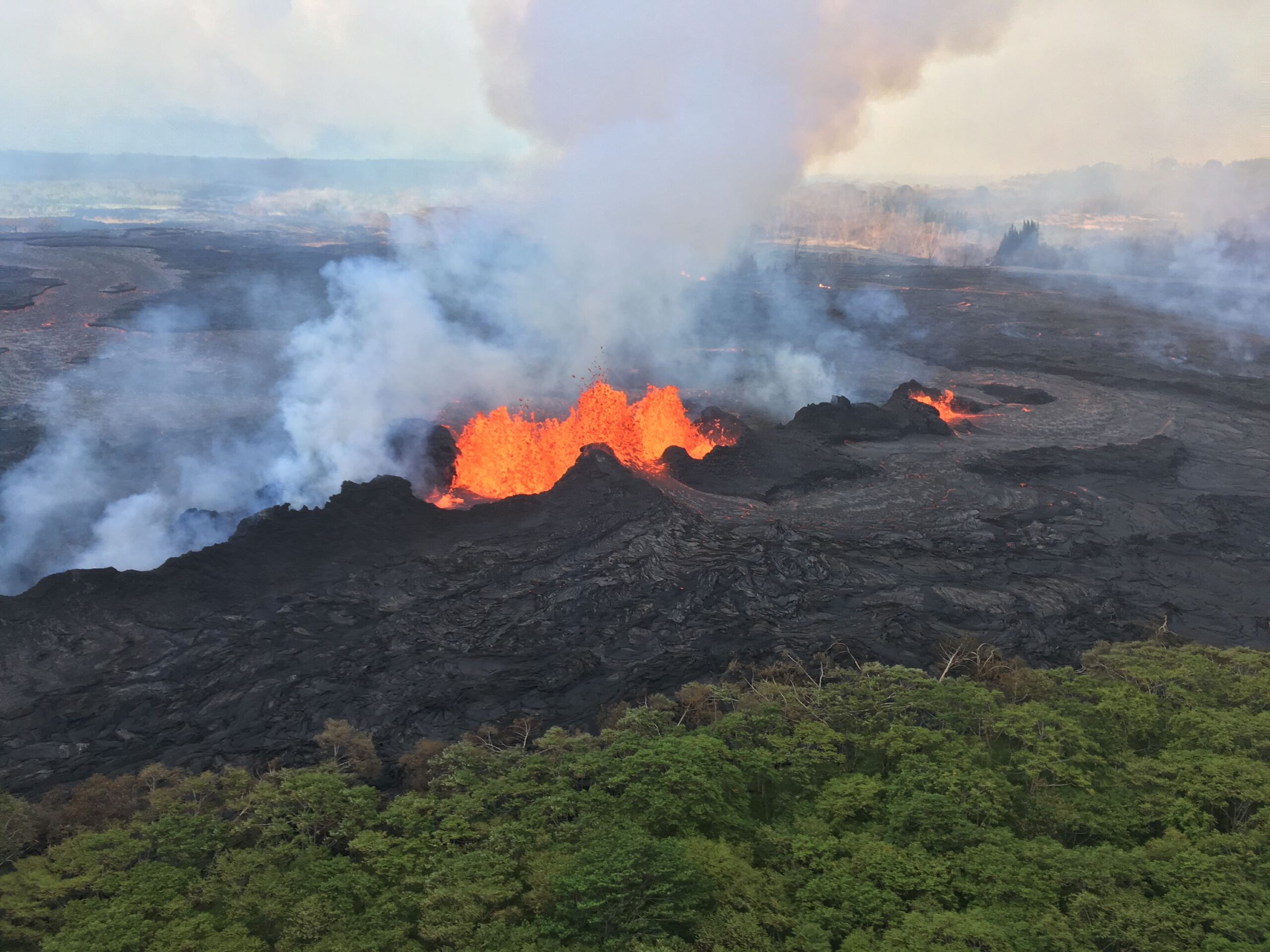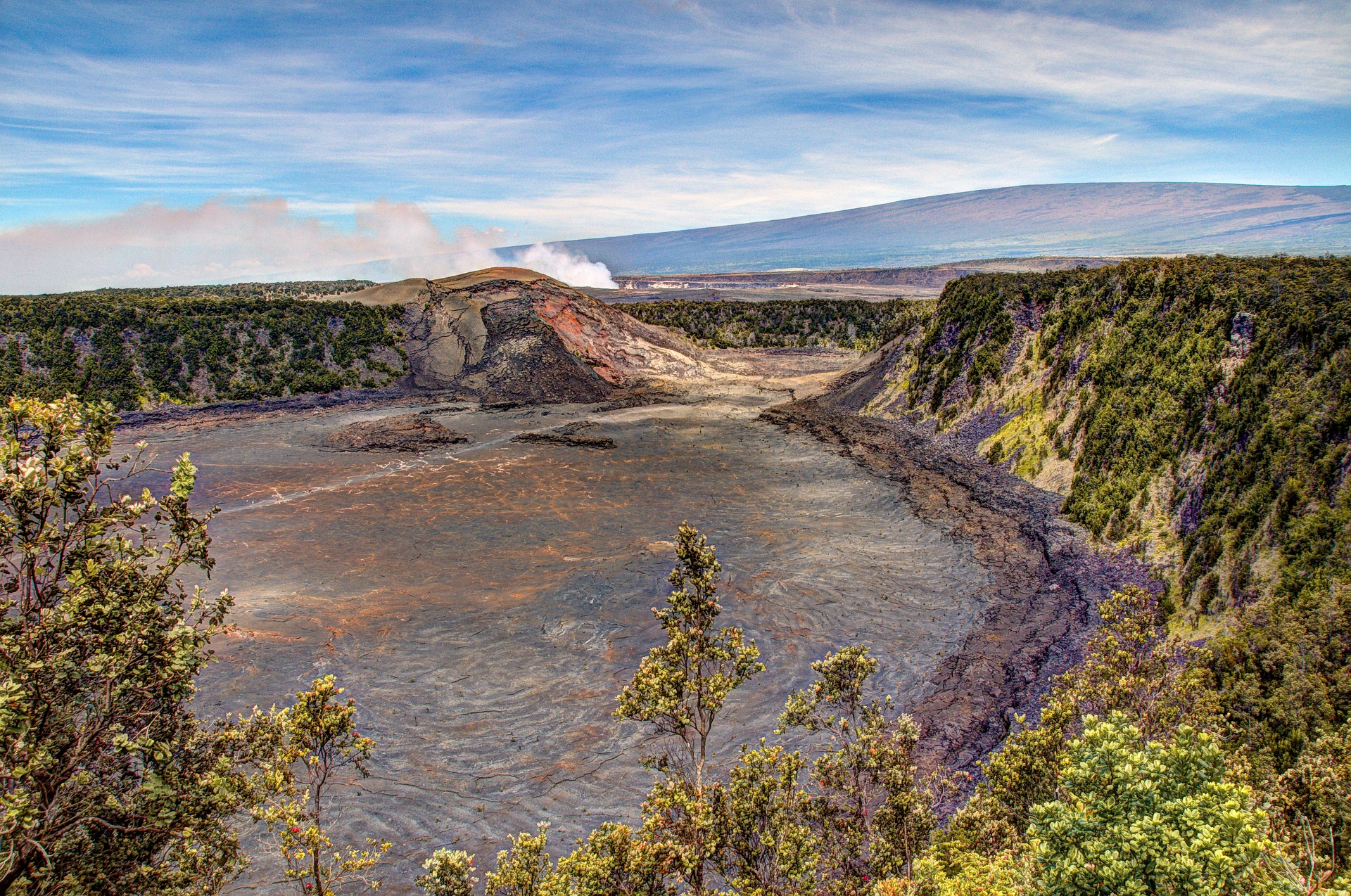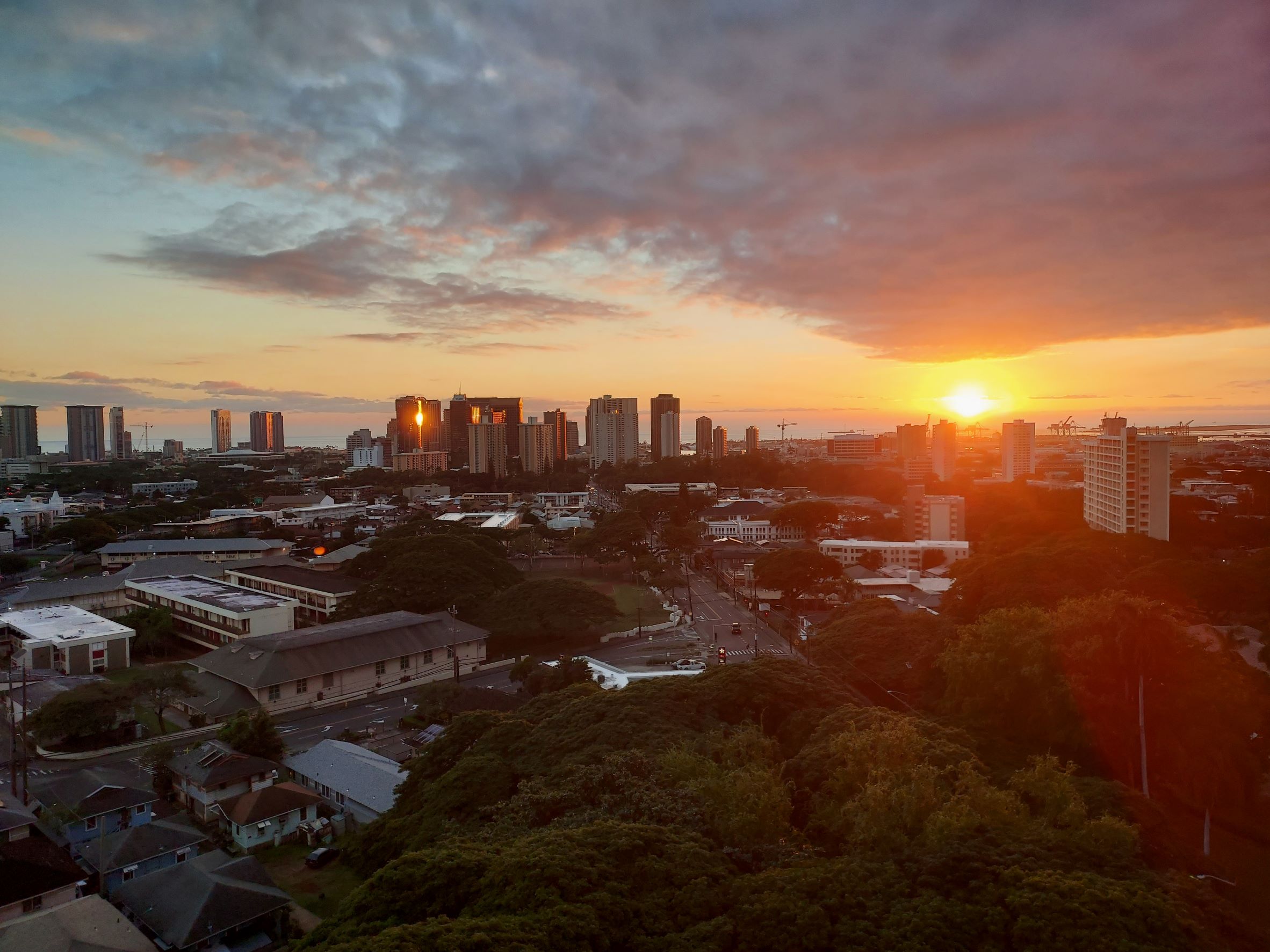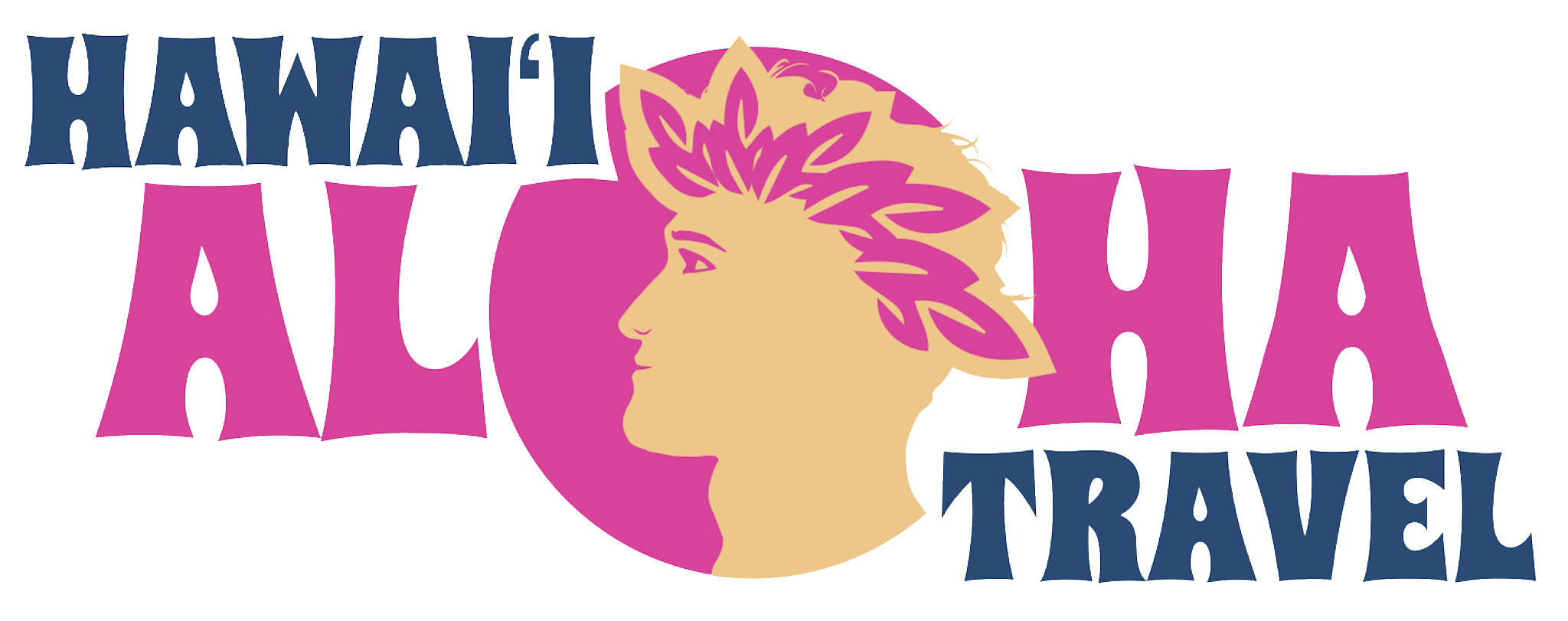Well, that escalated quickly! Instantly and explosively, Halema’uma’u Crater at Kilauea Volcano in Hawaii Volcanoes National Park on Hawaii Island roared back into the international spotlight in the predawn hours of June 7. The Kilauea volcano eruption will attract visitors to the park in huge numbers. Residents and visitors are already thronging to the park, so we thought we’d offer some useful tips for anyone making the trek up the mountain as Kilauea Volcano erupts. We’ve seen this before. Kilauea Volcano has been actively erupting since 1983.
First, park entry fees are now only accepted by electronic payment, with a debit or credit card. That policy began just weeks ago on May 26, so many visitors to the park may be unaware. It’s a long drive up the mountain, and it’d be a drag to get turned away because you only have cash. The Standard Entrance Pass is required. You can expect to pay $15-$30. There are exceptions and different fees for certain visitors and visitor groups. We’ll recommend making online reservations for your visit. It’s easy, and it’s the surest way to ensure easy access to HVNP.

Hawaii Volcanoes National Park will be busy
Next, you can expect the vehicle traffic to be heavy. Parking will be tight. Peak daytime hours will be exceptionally busy during an ongoing eruption in Halema’uma’u Crater. So will the hours during sunrise and sunset, when the sky is afire with the hypnotic glow of burbling lava. Thankfully, Hawaii Volcanoes National Park is open to the public 24 hours a day. There’s plenty of time to plan a visit when visitor traffic at the park wanes in the wee hours. It just takes some planning and preparation.
Most importantly, personal safety in HVNP during an ongoing eruption in the crater should always be your primary concern. Higher concentrations of sulfur dioxide in the air you’re breathing can be downright dangerous for visitors with respiratory issues. Certain trails and scenic viewpoints may be closed because of the action on the crater floor. Current conditions at Kilauea Volcano are fluid (we’re talking about lakes and rivers of lava, after all). Be aware of conditions at the park before you get there.

Kilauea Volcano information resources
Finally, take advantage of the many valuable resources made available by Hawaii Volcanoes National Park and the Hawaii Volcano Observatory through the US Geological Survey as Kilauea Volcano erupts. Multiagency coordination makes a wealth of information including live webcams available in real time, so there’s no real reason to be unaware of current conditions at Kilauea Volcano. (Unless you’re completely “off-grid”, in which case you wouldn’t be reading this blog anyway.)
We’ve marveled at and written about the spectacular earthly wonder of Kilauea Volcano for a long time here at the HAT Blog. And the recent eruption at nearby Mauna Loa, too. Since Kilauea’s reawakening in 2018, with its staggering natural beauty and inevitable creation and destruction, rumblings from the mountain have never been very far from mind.
Who can ever forget the images of homes consumed by fire, lava bombs, and a cauldron of molten earth spewing forth from Fissure 8 in the quiet neighborhood of Leilani Estates? Kilauea stirred briefly again in 2021. The Mauna Loa eruption in March of this year made international headlines and threatened to cut off Daniel K. Inouye Highway, a vital lifeline that connects the “Kona Side” to the “Hilo Side”. (It didn’t, but phew!) And now, Kilauea Volcano erupts once again and is capturing the world’s imagination.

Our marvel continues, as does our awareness of the awesome power of the volcano to consume our attention as easily as it does homes, forests, farmlands, and coastlines. Here on Oahu, we recently took a long walk in the clear and fresh air, prompted by the headline hellscape images of New York City choking in the smoke of Canadian wildfires. We couldn’t help but wonder if our skies here in Hawaii might soon glow orange with vog as the summer sun dances away from the horizon in the morning and toward it in the evening.
Will the days and weeks ahead bring forth volcanic haze, obscuring the horizon and views from popular scenic points? Will Halema’uma’u Crater go quiet again before this blog is published? Predictive science and vulcanology have come a very long way thanks to the work of very smart people on Hawaii Island (and elsewhere, of course). Still, there’s no telling what will happen. But we know what might.
“Lucky we live Hawaii”, as the saying goes. Pay attention, even if…especially if…you’re just visiting. The good folks in the Hawaii Aloha Travel ohana are here to help you stay aware and plan your best trip.




